Business Leaders: At UMaine, Joan Ferrini-Mundy has been an advocate for STEM education
 PHOTo / FRED FIELD
Joan Ferrini-Mundy is president of the University of Maine but also has the title of vice chancellor of research and innovation, a role that she embraces.
PHOTo / FRED FIELD
Joan Ferrini-Mundy is president of the University of Maine but also has the title of vice chancellor of research and innovation, a role that she embraces.
Joan Ferrini-Mundy, who became president of the University of Maine in 2018, is a math educator by background, so it’s not surprising that she’s overseen one of the university’s largest periods of growth in the engineering and computing field.
Under her watch, UMaine unveiled the Ferland Engineering Education and Design Center, a $78 million structure where labs and classrooms are side-by-side, fostering hands-on learning. This summer, UMaine will break ground on the Factory of the Future, a center for innovation on the Orono campus.
Mainebiz: In addition to being president of the University of Maine, you have the title of vice chancellor of research and innovation. That sounds like two full-time jobs, but what’s involved in the latter title?
Joan Ferrini-Mundy: The two jobs really do merge and reinforce each other. As president of the state’s flagship university, I focus a lot on how our research and development mission serves the state of Maine and supports the development of a next-generation workforce of innovators. With the System-wide vice chancellor responsibility, I help expand and energize those commitments across our seven universities and the University of Maine School of Law.
It’s rewarding to support faculty across the University of Maine System to establish themselves as researchers, bring in their own research funding and engage their students in discovery. That happens by making sure UMaine’s considerable research and innovation infrastructure is accessible System-wide.
An increasing number of undergraduate students are gaining meaningful and authentic experiences in research and scholarship across the System, which they translate to their professional careers. Offering these experiences supports student success after graduation and, as a result, produces talented, innovative workers in our state.
MB: In the realm of innovation, how did UMaine come up with the model of having labs adjacent to classrooms?
JFM: UMaine is almost 160 years old. From the very beginning, on farms and in forests, the labs where our faculty do research and make discoveries are also places where our students learn and engage. Today, our labs — which include music studios, stages, mountains, glaciers, lakes, oceans, farms, fields and forests in our state and beyond — are places for student learning.
As we plan for and build new spaces at UMaine, we are imagining an environment akin to a ‘teaching hospital’ model. In this model, students will have spaces and classrooms directly adjacent to cutting-edge research and technology development.
This will provide opportunities for them to begin their own cutting-edge science, engineering and discovery as undergraduates with high-quality mentorship from our extraordinary faculty.
MB: What’s the best way to get more women and more diversity into fields like engineering?
JFM: As a woman who grew up in the field of mathematics, I’d note that in my early days as a student, the majority of the relatively few women who were in mathematics (including me) planned to be teachers — maybe because it wasn’t clear what other options there were.
I’ve been conscious for a long time about the many reasons why the presence of women, people of color and so many other groups is not what it should be in science, technology, engineering and mathematics.
Everywhere I’ve been I’ve worked to improve that situation. Believing that talent and interest can come from anywhere and anyone, and not bringing assumptions and biases to the education and work setting, is critical. Helping people see themselves in exciting and rewarding STEM professions and roles is another key, which can be achieved through career education, internship and apprenticeship opportunities, and mentorship.
Providing exciting learning opportunities and programs that are relevant and enable students to see how they can have an impact is important. The prosperity of our state and our nation will depend in large part on innovation, creative problem-solving, and new technologies in STEM. What better way to advance than by involving the full range of talented people in our society?
MB: What will the Factory of the Future bring to UMaine?
JFM: I have worked, in conversation with our community, to embrace a forward-looking vision for UMaine that acknowledges and builds on its great strength as a leading research university with our top-tier Carnegie R1 status. At UMaine, world-class research and student learning are uniquely integrated. Our bold vision is embodied in the GEM (Green Engineering and Materials) Factory of the Future, a 45,000-square-foot expansion of the Advanced Structures and Composites Center integrated within the Maine College of Engineering and Computing.
GEM aims to revolutionize sustainable industry 4.0 manufacturing through research and immersive learning experiences for students. The Factory of the Future is a leap in large-scale flexible additive and hybrid manufacturing with the goal of harnessing the incredible capabilities of high-performance computing and AI. Positioned at the forefront of academia and industry convergence, GEM will drive UMaine’s mission to innovate and develop a workforce to solve our society’s major needs, including sustainable housing and clean energy.
MB: How do you see UMaine’s role in providing what employers in the state need in the way of workforce development and skills training?
JFM: With the breadth of research and scholarship at UMaine, we produce graduates prepared to contribute to the knowledge, innovation and creative economy within our state and beyond. We focus on authentic engagement through research learning experiences in which students solve real-world problems through research.
In addition, as part of the Alfond Foundation-funded Student Success and Retention initiative, UMaine and partners UMS-wide recently launched Pathways to Careers to help students set their career goals and secure their first job after graduation by facilitating high-quality internship experiences.
MB: Parents love to see new buildings on campus tours. Is there pressure to continually fundraise and continually upgrade the campus?
JFM: All universities need to think about how their facilities are evolving to meet changing student expectations, address workforce preparation needs and foster innovation. UMaine is no exception. In 2022 the Ferland Engineering and Education Design Center opened. It’s a fantastic facility that serves as a dynamic space for learning and research, a place where campus tours originate and a gathering spot for students from across the university.
Renovations in Karen Boudreau Hall; new art and upgrades to welcome students to Beryl Warner Williams Hall; and the recently opened Hotel Ursa, a public-private partnership that has breathed new life into historic Holmes and Coburn halls, all have important impact. New athletic facilities for softball and field hockey, upgrades to the Alfond Arena and exciting work underway for soccer and other areas of athletics is made possible by the Alfond Foundation and brings great energy and pride to our state through UMaine’s D1 athletics program.
I enjoy talking and dreaming with the generous and committed alumni, donors, supporters and funders who partner with us to ensure a bright future for our university.
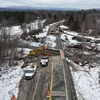


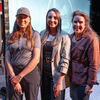
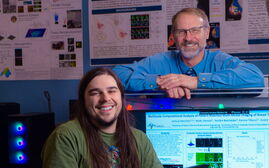
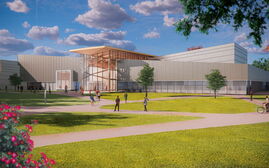
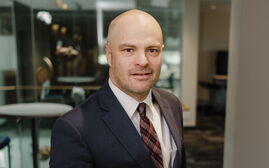





0 Comments